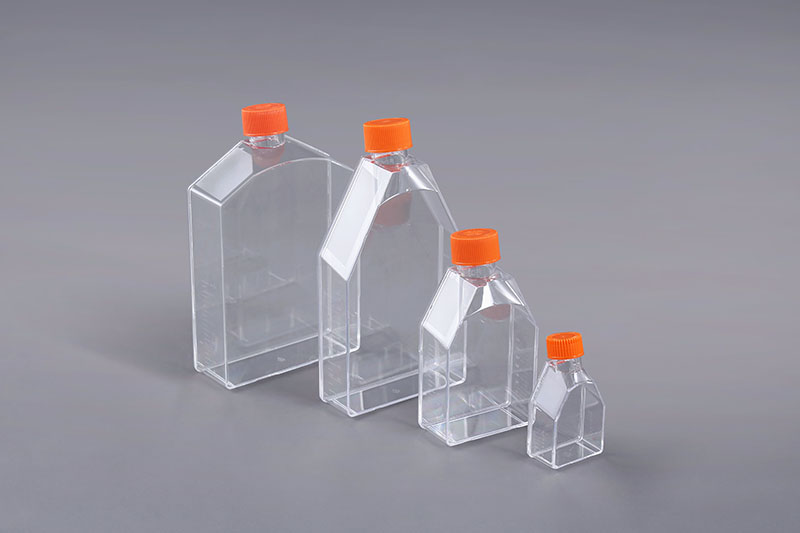The cell culture flasks are a cell consumable suitable for medium-scale cell and tissue culture in the laboratory. Common specifications include 25cm², 75cm², 175cm², 225cm², etc., and are widely used in cell culture technology centers.
The cell culture flasks are made of transparent polystyrene raw material, which has excellent optical properties and is convenient for microscope observation. According to the different types of cultured cells, it is divided into TC hydrophilic surface and non-TC hydrophobic surface. There are two types of caps: sealing cap and vent cap. There is a 0.2μm hydrophobic filter membrane in the breathable cap to provide sterile gas exchange. To reduce the risk of pollution, it is mainly used for open cultivation. Sealing caps are often used for airtight culture to ensure airtightness, and can also be used for open culture when the bottle cap is unscrewed.
The side of the cell culture flasks have a clear scale, which can improve the accuracy of the culture solution. The bottleneck part is designed with frosted, which is convenient for marking to distinguish the bottles for different experimental purposes. The ridgeline design on the back makes it easier to stack the culture bottles and prevent them from slipping off. The wide neck design allows the pipette and cell scraper to enter the bottle at any angle.
The cell culture flasks can be used for the culture of Vero cells, HEK 293 cells, CAR-T cells, MRC5, CEF cells and other adherent cells, It can also be used for static culture of suspension cells such as CHO cells, insect cells, BHK21 cells and MDCK cells.
The FAI climbed 5.9 percent year-on-year in the first 11 months of 2018, quickening from the 5.7-percent growth in Jan-Oct, the National Bureau of Statistics (NBS) said Friday in an online statement.
The key indicator of investment, dubbed a major growth driver, hit the bottom in August and has since started to rebound steadily.
In the face of emerging economic challenges home and abroad, China has stepped up efforts to stabilize investment, in particular rolling out measures to motivate private investors and channel funds into infrastructure.
Friday's data showed private investment, accounting for more than 60 percent of the total FAI, expanded by a brisk 8.7 percent.
NBS spokesperson Mao Shengyong said funds into weak economic links registered rapid increases as investment in environmental protection and agriculture jumped 42 percent and 12.5 percent respectively, much faster than the average.
In breakdown, investment in high-tech and equipment manufacturing remained vigorous with 16.1-percent and 11.6-percent increases respectively in the first 11 months. Infrastructure investment gained 3.7 percent, staying flat. Investment in property development rose 9.7 percent, also unchanged.
 English
English



















































